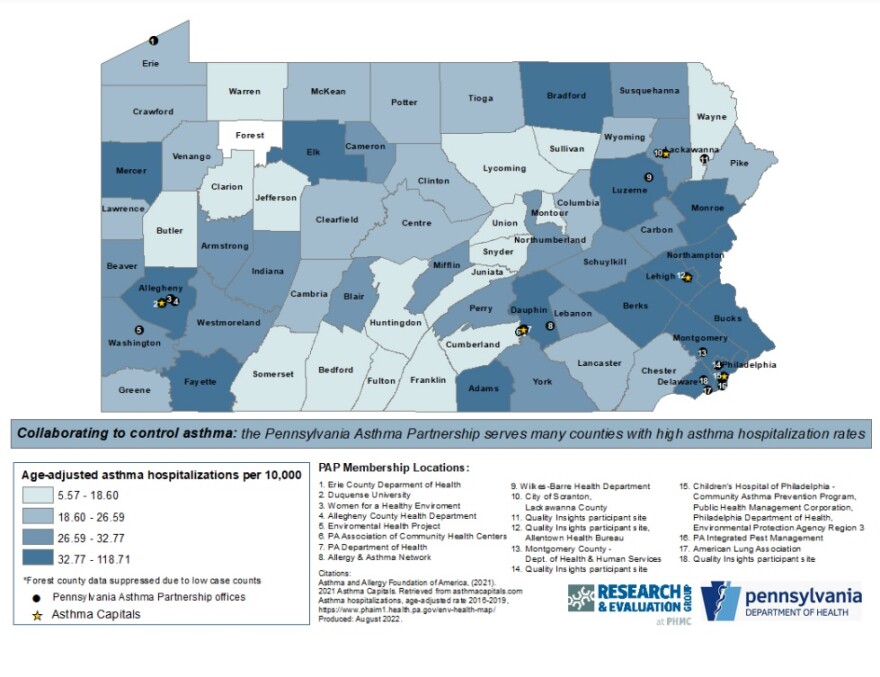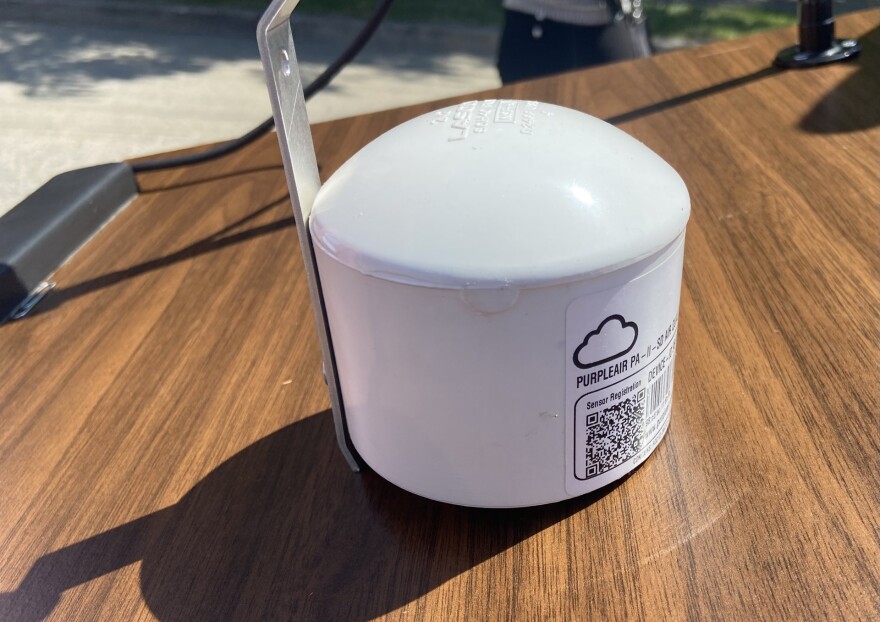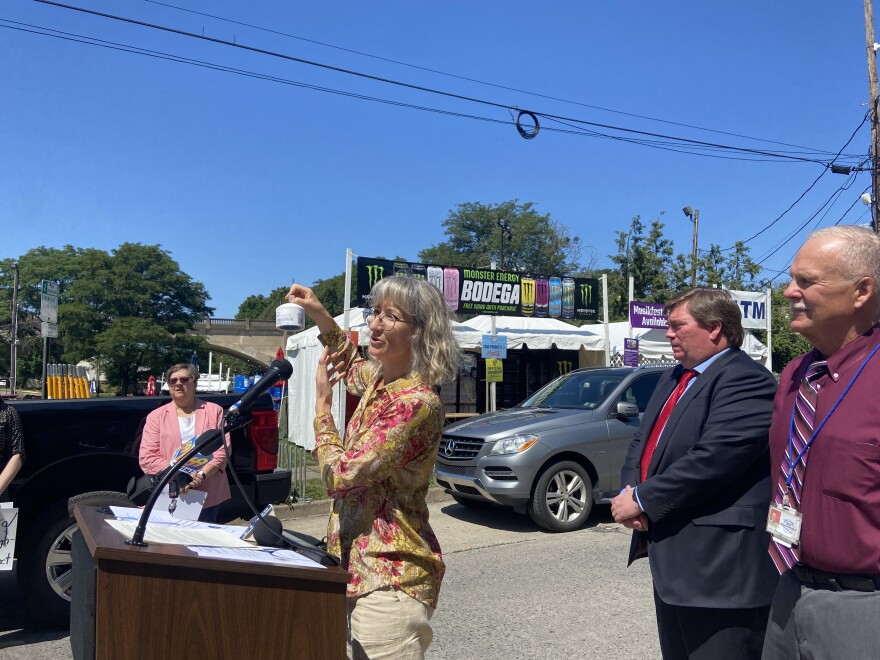BETHLEHEM, Pa. — The Lehigh Valley is a great place to live, work and retire, Northampton County Executive Lamont G. McClure said Wednesday, but poor air quality is driving residents away.
“That is not the type of environment that will convince our young people, who we want to stay here and raise their own families, and help us create our economy and grow the middle class even more,” McClure said.
“Bad air won't convince them to stay here.”
- Officials from Lehigh and Northampton counties held a news conference Wednesday to launch "Lehigh Valley Breathes"
- The project, more like an experiment, aims to collect air quality data throughout the Valley for a year
- Once the data is in hand, officials can make recommendations to improve air quality for all
McClure, along with Lehigh County Executive Phillips Armstrong and other officials, held a news conference to announce a new, Valley-wide effort to monitor air quality.
Called Lehigh Valley Breathes, the more-than-$100,000 project is really more of an experiment.
“The reason we're going to do that is we are data-driven. We believe in solutions that are directed by science, not merely by emotion and rhetoric.”Northampton County Executive Lamont McClure
After 40 PurpleAir monitors are installed throughout the region, officials will collect data for a year. From that data, leaders will provide recommendations to improve air quality.
“The reason we're going to do that is we are data-driven,” McClure said. “We believe in solutions that are directed by science, not merely by emotion and rhetoric.”

How bad is the Lehigh Valley’s air?
Air quality has been a point of contention this summer across the Valley amid waves of smoke blowing into the region from Canadian wildfires. In June, the smoke gave the region some of the worst air quality in the nation.
But the smoke is just the latest threat to residents. Air quality already generally is poor because of emissions from trucking and warehousing, a major part of the region’s economy.
Transportation and mobile sources are the second-largest contributors to greenhouse gas emissions, making up 27% of the Valley’s total emissions, according to a March study from the Lehigh Valley Planning Commission.
About 35% of the Valley’s total emissions are attributed to industrial electricity and natural gas.
“What we really emphasize about attracting people to this area is quality of life. Our rails to trails, our festivals, our programs that say, ‘Come here. You'll enjoy it.’ But we want to have breathable air when you get here. And that's an important part.”Lehigh County Executive Phillips Armstrong
Last year, the Asthma and Allergy Foundation of America ranked Allentown third in the nation in its list of the most challenging places to live with asthma.
The year before, Lehigh and Northampton counties had some of the highest rates of asthma-related hospitalizations in the commonwealth, according to the state Health Department.
“What we really emphasize about attracting people to this area is quality of life,” Armstrong said. “Our rails to trails, our festivals, our programs that say, ‘Come here. You'll enjoy it.’
“But we want to have breathable air when you get here. And that's an important part.”
‘This is really bad stuff’
Officials expect the PurpleAir monitors to be installed by this fall, officials said. A handful already are in place throughout the Valley.
About the size of a softball, the white monitors can be attached to a property with a zip-tie and use lasers to monitor the air directly below them, said Lehigh University’s Breena Holland, associate professor of political science.

The monitors detect concentrations of PM 2.5, particles so small that they’re invisible to the naked eye, but made up of a mix of chemicals that can get deep into the lungs and can cause health problems.
“This is really bad stuff, especially for kids,” Holland said. “More dangerous than that, it can travel into the deeper parts of your lungs and it can actually get on the tissues in your lungs and cause lung inflammation.
“People refer to this as what's called a non-threshold pollutant, which means that there's no amount of it at all that is expected to be safe for the human body.”Breena Holland, associate professor of political science at Lehigh University
“People refer to this as what's called a non-threshold pollutant, which means that there's no amount of it at all that is expected to be safe for the human body.”
There already are two air monitoring sites in the Valley — one in Freemansburg and another in East Allentown. Those are used by the state Department of Environmental Protection for compliance with the federal Clean Air Act.
Adding more air monitors to the region, especially near homes close to heavily-traffic areas, will help officials study a broader area, officials said.
Once the air monitors are calibrated and running, the real-time data will be available to residents via the Shiny App.
“The long and the short of this is that this is very dangerous, and that we want to understand how it's being affected by new sources of pollution,” Holland said.
Looking at weather patterns
Andrea Wittchen of iSpring, a sustainability consulting agency, said the study will last a year so data can be collected throughout all four seasons.
“The reason for that is we want to go through all four seasons and as many different weather patterns as have happened during the year, which lately is a heck of a lot of them,” Wittchen said.
“The idea being that we want to know how weather affects the dispersal of PM 2.5.
“And at the end of the project, you'll see a final report to both of the counties and the public, telling them what we have found, and what our analysis is.”
“The data derived from the project might support cooperative measures with state agencies and local governments to mitigate traffic-related air quality impacts in environmental justice communities. The data may also help guide county decisions to establish funding incentives and disincentives based on the project's policy recommendations.Northampton County Executive Lamont G. McClure
Possible recommendations could include requirements for electric vehicle charging stations, rooftop solar panels, electric forklifts and indoor air filtration systems for schools and neighborhoods affected by poor air, McClure said.
“The data derived from the project might support cooperative measures with state agencies and local governments to mitigate traffic-related air quality impacts in environmental justice communities,” McClure said.
“The data may also help guide county decisions to establish funding incentives and disincentives based on the project's policy recommendations.
“Again, all possible — nothing concrete yet because we don't have any data.”
‘We are looking for sites’
While a handful of the air monitors are already in place, officials said they’re hoping residents volunteer to host a monitor – both in areas of higher risk for pollution, like near highways and warehouses, as well as more rural areas.
“We are looking for sites to place these monitors,” Wittchen said. “It could be your home, it could be a property you own someplace else, it might be your business.”
There is no cost to residents who want to participate, but each monitor requires electricity and Wi-Fi connectivity.
“Once we get the high-density area monitors installed, we will then start down the list and see who has who was in a location where we want to put the low-density monitors,” she said.
“So you're not out of the game, just because you're not in highly dense areas, you can still participate.”
Residents interested in hosting a monitor can find out more information on their county’s website, or by emailing LVBreathes@gmail.com.


